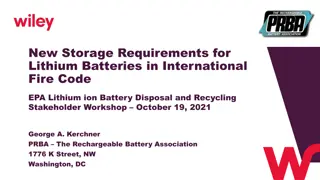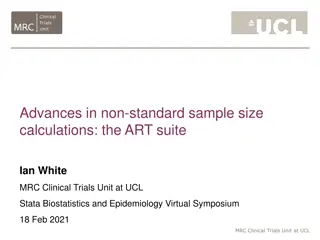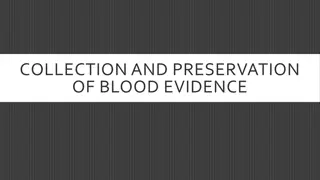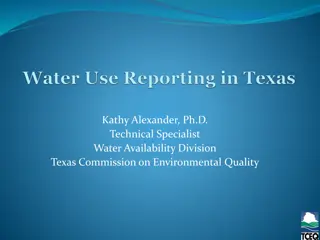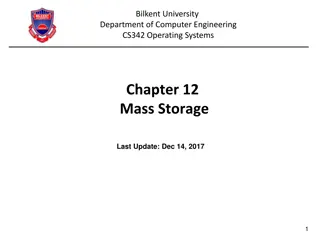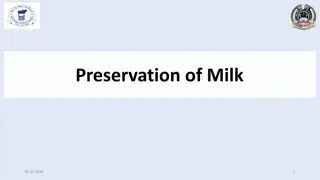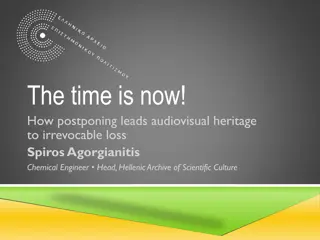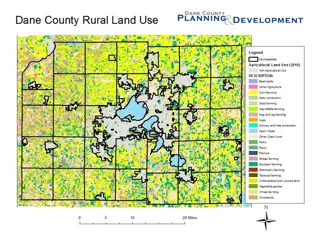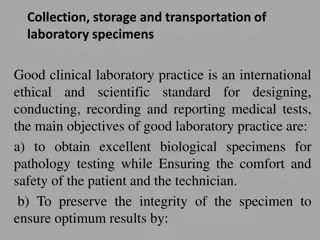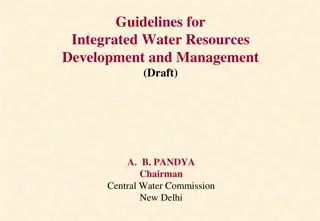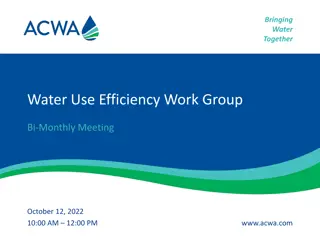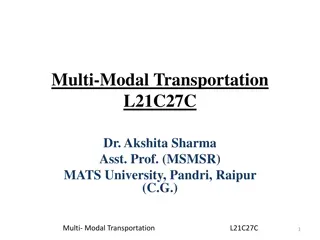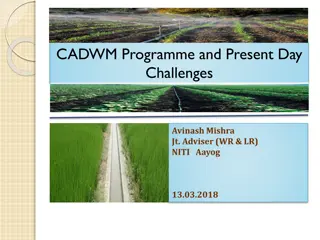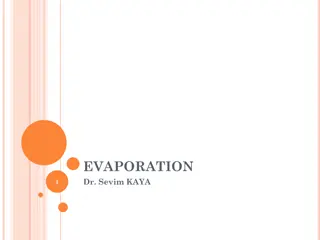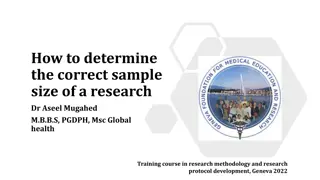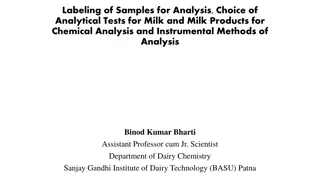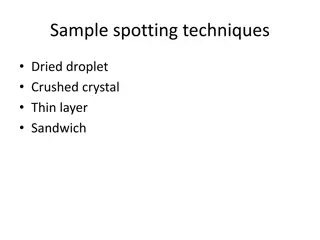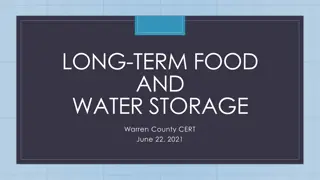Water Sample Preservation, Transportation, and Storage Guidelines
Understanding the importance of timely analysis, this guide discusses factors affecting sample stability, recommended chemical preservatives for water samples, suitable containers for storage, and methods to minimize changes during transportation. It also highlights parameters to measure at the sampling site and essential steps for sample transportation.
Download Presentation

Please find below an Image/Link to download the presentation.
The content on the website is provided AS IS for your information and personal use only. It may not be sold, licensed, or shared on other websites without obtaining consent from the author. Download presentation by click this link. If you encounter any issues during the download, it is possible that the publisher has removed the file from their server.
E N D
Presentation Transcript
Preservation, Transportation and storage of Water samples (Cont d) INTRODUCTION In general, the shorter the time that elapses between collection of a sample and its analysis, the more reliable will be the analytical results. Sample preservatives interfere with some of the analyses. preservation is difficult because almost all At best, preservation methods only serve to retard the chemical and biological changes that inevitably continue after sample collection. 2
Preservation, Transportation and storage of Water samples (Cont d) The main factors affecting sample stability are: 1. The nature of the sample 2. The sample container, and 3. The addition of preserving reagents to the sample Strict rules for the preservation of water samples do not exist. 3
Preservation of WaterSamples Suggested chemical preservatives and, recommended maximum storage times for samples for various analyses are summarized in Table below: 4
Preservation of Water Samples(Contd) Container PE (Polyethylene) PE Glass PE PE PE Glass PE PE PE PE Glass PE PE PE 5
Preservation of Water Samples(Contd) Fig. Methods of sample preservation to minimize potential changes of analytes during sample transportation and storage 127
TRANSPORTATION OFSAMPLE Following parameters are recommended for measurement at the sampling site or in the field immediately after a water sample has been taken: Temperature; pH; EC DO by DO probe. If DO probe is not available, take 300mL sample in a BOD bottle and fix the DO by adding 1 mL MnSO4 Turbidity; Transparency (for lakes and reservoirs). Residual chlorine (particularly for chlorinated drinking water) 7
TRANSPORTATION OF SAMPLE(Contd) If it is possible, alkalinity should also be measured at the time of sample collection. Samples should be placed in a cooler with ice box immediately after collection, at 40C. Be careful, when freezing samples, to leave at least 10% of the bottle volume as head space to accommodate expansion of the sample Unfrozen samples should contain little or no head space. 8
TRANSPORTATION OF SAMPLE(Contd) It is advisable to filter samples as soon as possible to reduce algal and bacterial activity The following fig. shows a suitable sample transport box. If the sample can be transported to the laboratory within 24 hours, it should not be frozen or preserved but kept cold and in the dark. It is recommended that no acids be added to unfiltered samples as the acidity may cause leaching of the sediments and/or degradation constituents. of biological 9
TRANSPORTATION OF SAMPLE(Contd) Fig. Ice Box/sample transport box 10














